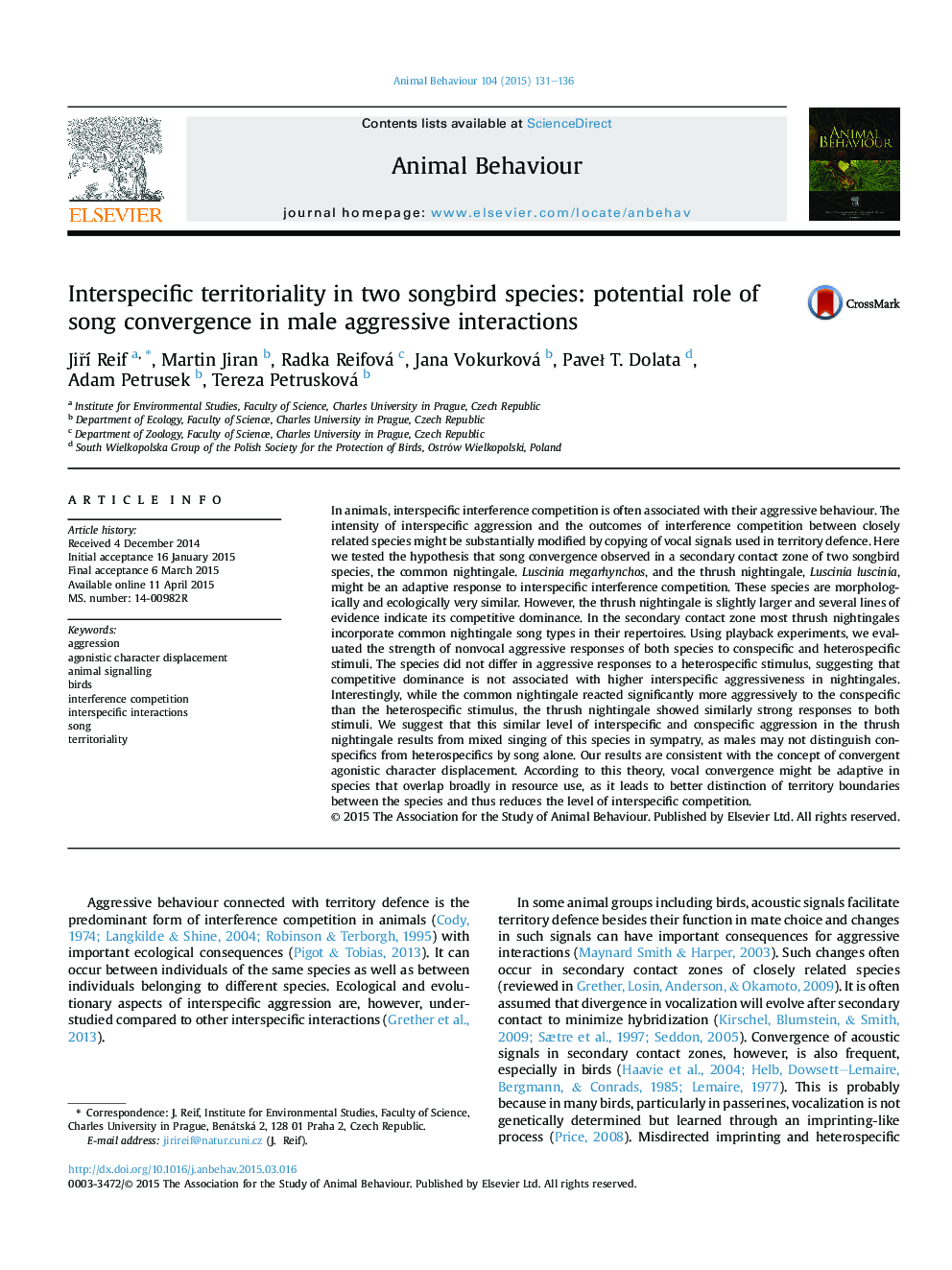| کد مقاله | کد نشریه | سال انتشار | مقاله انگلیسی | نسخه تمام متن |
|---|---|---|---|---|
| 2416299 | 1552224 | 2015 | 6 صفحه PDF | دانلود رایگان |

• Nightingales showed a strong interspecific territoriality in playback experiments.
• Both species showed similar level of aggressiveness to the heterospecific stimulus.
• Larger body size is thus not always correlated with higher aggressiveness.
• Response of one species did not differ between conspecific and heterospecific stimuli.
• This pattern can be explained by its copying of the song of the second species.
In animals, interspecific interference competition is often associated with their aggressive behaviour. The intensity of interspecific aggression and the outcomes of interference competition between closely related species might be substantially modified by copying of vocal signals used in territory defence. Here we tested the hypothesis that song convergence observed in a secondary contact zone of two songbird species, the common nightingale. Luscinia megarhynchos, and the thrush nightingale, Luscinia luscinia, might be an adaptive response to interspecific interference competition. These species are morphologically and ecologically very similar. However, the thrush nightingale is slightly larger and several lines of evidence indicate its competitive dominance. In the secondary contact zone most thrush nightingales incorporate common nightingale song types in their repertoires. Using playback experiments, we evaluated the strength of nonvocal aggressive responses of both species to conspecific and heterospecific stimuli. The species did not differ in aggressive responses to a heterospecific stimulus, suggesting that competitive dominance is not associated with higher interspecific aggressiveness in nightingales. Interestingly, while the common nightingale reacted significantly more aggressively to the conspecific than the heterospecific stimulus, the thrush nightingale showed similarly strong responses to both stimuli. We suggest that this similar level of interspecific and conspecific aggression in the thrush nightingale results from mixed singing of this species in sympatry, as males may not distinguish conspecifics from heterospecifics by song alone. Our results are consistent with the concept of convergent agonistic character displacement. According to this theory, vocal convergence might be adaptive in species that overlap broadly in resource use, as it leads to better distinction of territory boundaries between the species and thus reduces the level of interspecific competition.
Journal: Animal Behaviour - Volume 104, June 2015, Pages 131–136